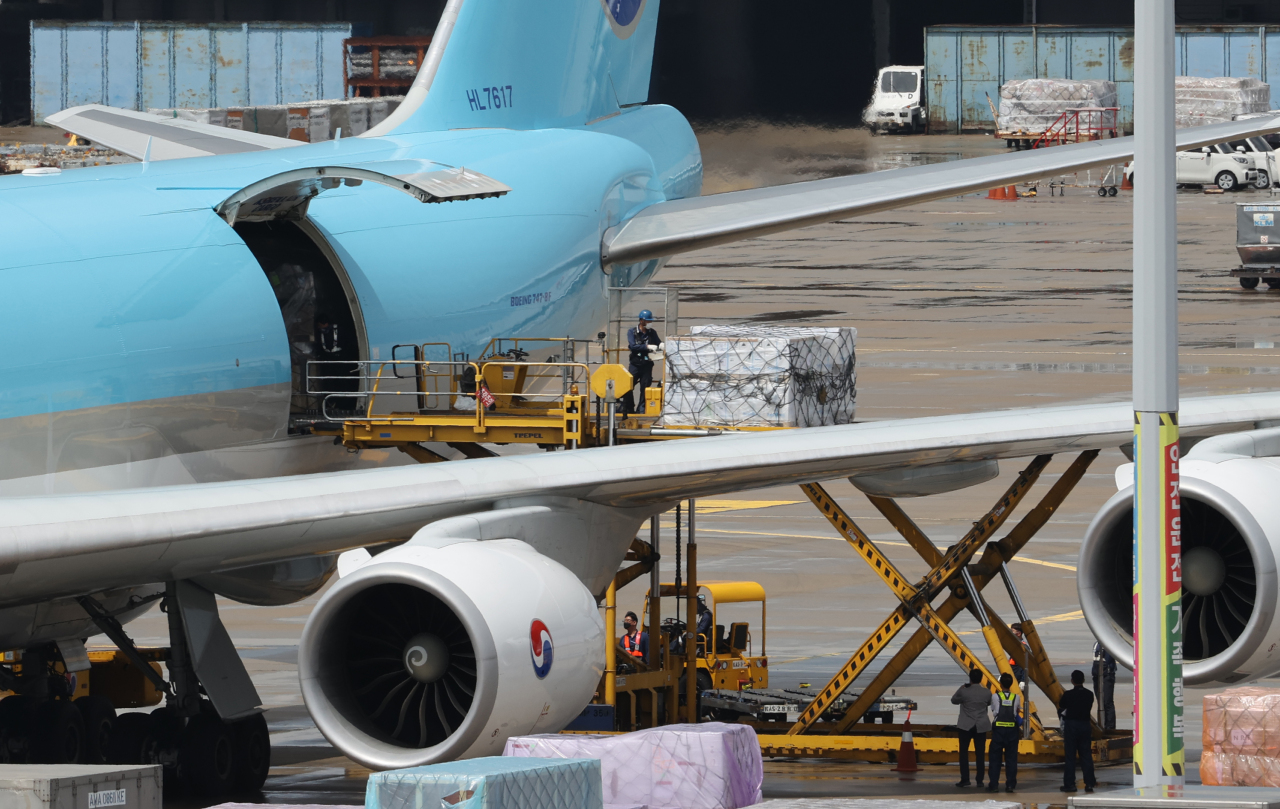 |
A Korean Air plane carrying vaccines arrive at Incheon Airport. (yonhap) |
Full-service carriers like Korean Air and Asiana Airlines continued to deliver profit thanks to their cargo business, drawing a stark contrast with low cost carriers amid a severe drop in international air travel due to the prolonged coronavirus pandemic.
Last week, Korean Air reported its fifth consecutive quarterly operating profit. Revenue in the second quarter of this year increased by 16 percent to 1.95 trillion won ($1.73 billion) and operating profit by 31 percent to 196.9 billion won compared to a year earlier, which the airline said was due to its efforts to boost cargo operations and reduce costs.
Asiana also posted 94.9 billion won in operating profit and 933.5 billion won in revenue during the April-June period.
“In addition to cargo planes, we are dispatching the converted A350 for a major cargo route as well as expanding belly cargo business in order to maximize cargo revenue,” the airline said in a statement. Items that are being transported include electronics as well as medical supplies such as masks and COVID-19 test kits.
Global air cargo volume was up 9.9 percent in June compared to the same time two years ago, according to the International Air Transport Association, citing “favorable supply chain conditions.”
The increase also signals new export orders growth accelerating in countries like China, South Korea and Germany, the association said.
But as the two airlines enjoy growing cargo demand and rising air freight charges, low-cost carriers continue to bleed cash.
Jeju Air racked up 116.9 billion won in revenue during the first half of this year as it suffered an operating loss of 158.5 billion won.
Another budget airliner, Jin Air’s revenue and operating loss stood at 107.3 billion won and 108.9 billion won, respectively, while T’way Air racked up 92 billion won in revenue and 80.1 billion won in operating profit over the same period.
It is worth noting that domestic air travel demand appears to have recovered to pre-pandemic levels, with 2.9 million people having traveled during last month alone.
That figure stood at 2.7 million in 2019, according to data from the Transport Ministry’s air portal website.
But amid the slow vaccine rollout and concerns over the more contagious delta variant, things are not looking up for budget airlines later this year.
Despite the fanfare, the country’s first travel bubble with Saipan kicked off quietly with just a handful of passengers traveling under the scheme, underscoring concerns surrounding a fourth wave of infections.
By Yim Hyun-su (
hyunsu@heraldcorp.com)








